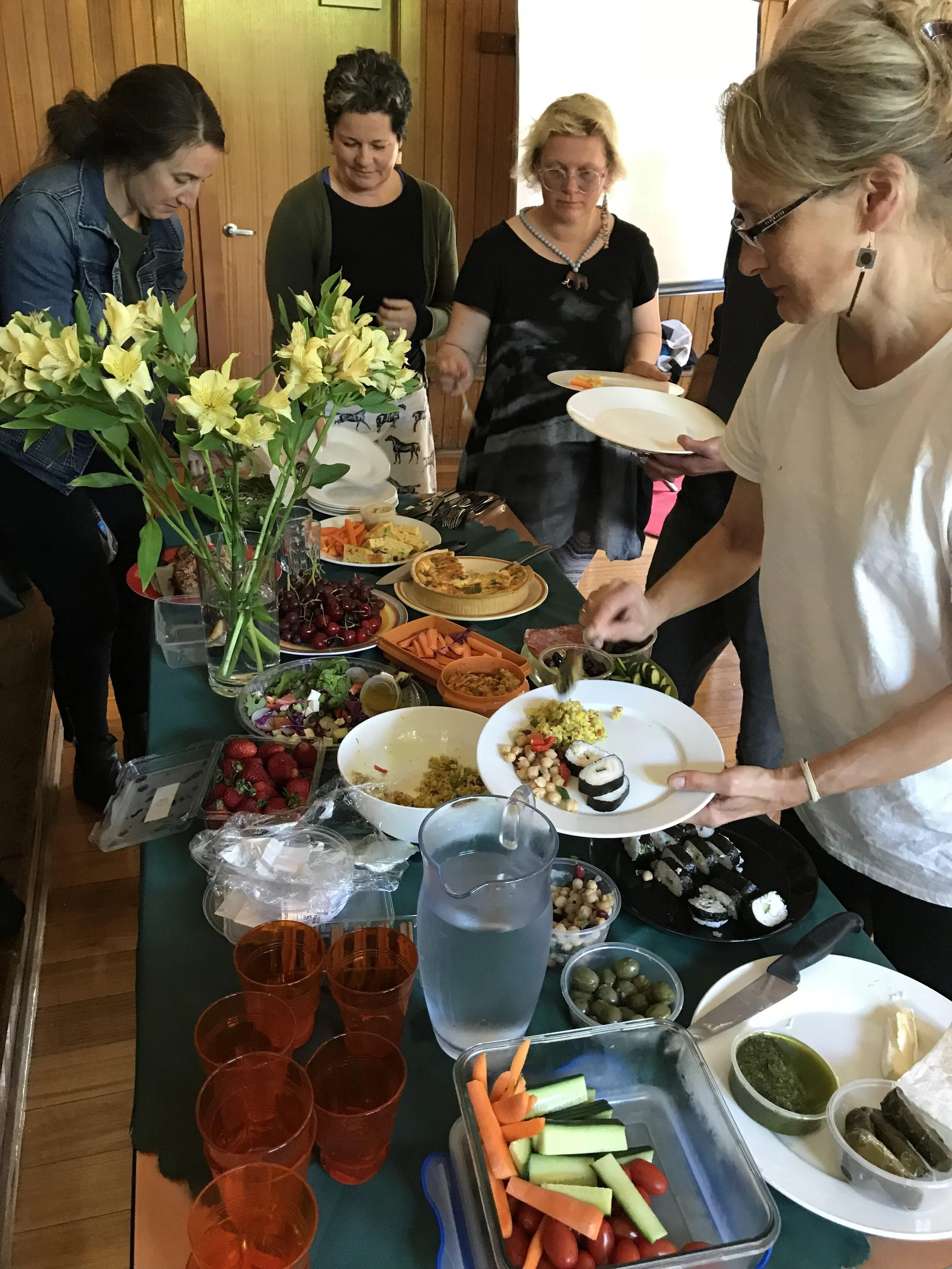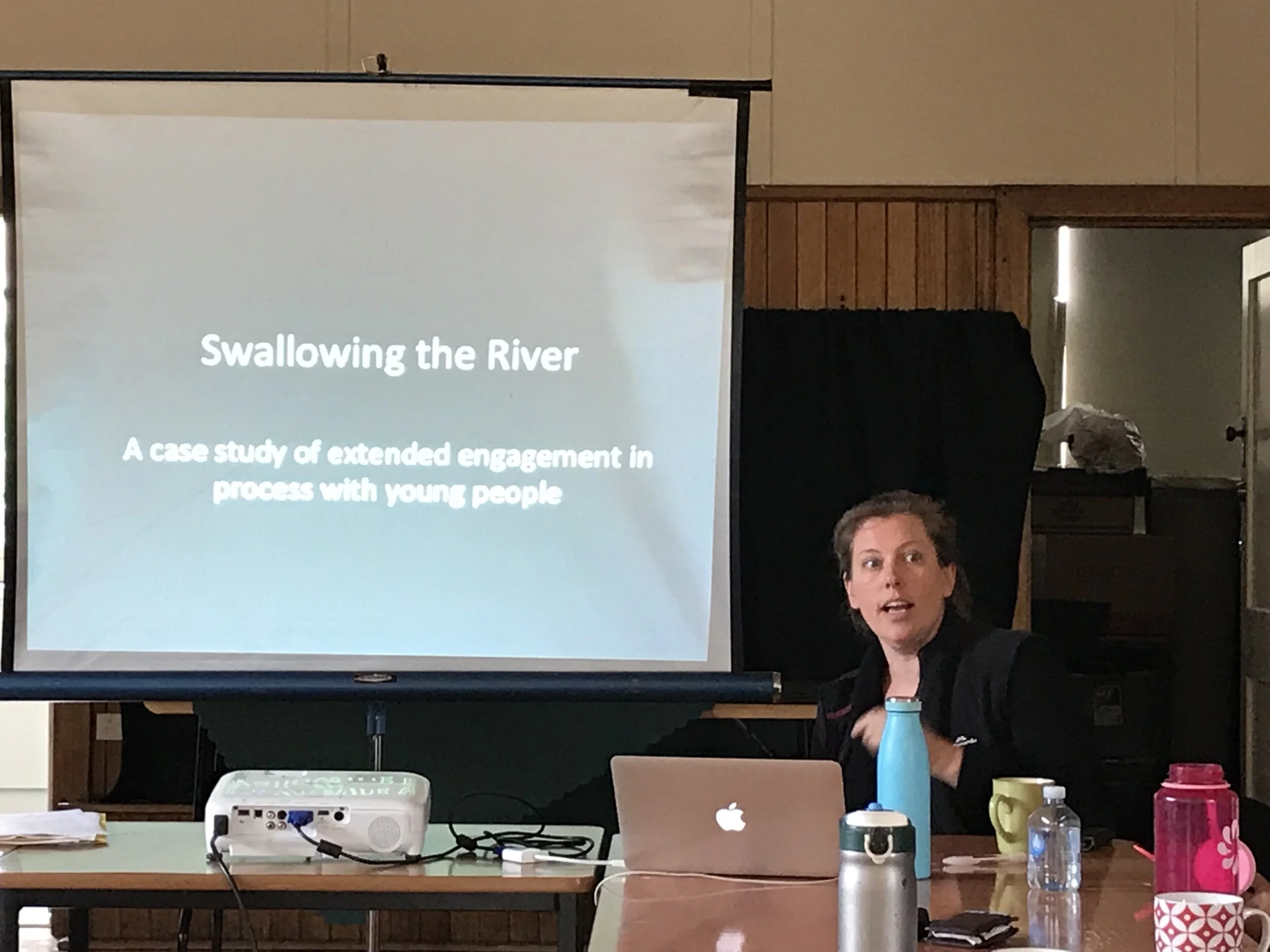ArTELIER: 28th November at The South Hobart Living Arts Centre led by Julie Waddington
This session was titled Authentic engagement: The art and dance of facilitating authentic co-creation with children and nurturing meaningful long-term outcomes.
Our Questions for the day:
· What is the dance between holding and controlling?
· How do we facilitate authentic co-creation with young children and parents while being aware of issues of power?
· What type of engagement models best promotes and nurtures meaningful long-term outcomes?
· Exploring the value and importance of Art as a process over Art as an outcome specifically aimed at early childhood
Jade Lily - the Relationship is the Project
Provocateur : Jade Lillie
Jade Lillie has been working in arts, culture, community engagement, education, training and international development for the last 15 years. She is a specialist in community engaged practice, facilitation, collaboration and strategy.
Jade spoke of the dilution of the term ‘engagement’ outlining the dangers of art speak driven by industry demands. She warned that without building authentic relationships a project can be a ‘transaction’ and shared her wisdom that “ The relationship is the project”.
She spoke of socially engaged practice as a slippery subject with many names, despite this best practice can be distilled to:
· Intergenerational and cross-cultural
· Socially, culturally and politicly engaged and relevant
· Impactful in terms of social and personal change
· Responsive and collaborative
· Reflective of the artists and communities who are collaborating on the project
· Building community (practice/place/issue)
Jade shared broad range of experience and focused examples from Thailand and from the Footscray Arts Centre (FAC) where she was CEO for a number of years. She described FAC as a leading community organisation with a grass roots focus and activist agenda at enabling social change. In describing the successes at Footscray Arts Centre she spoke of it being a generative force of people and place with one its key strengths being the re-writing of the centres constitution to put First Nations First. The change in the constitution allowed the organisation to be led by an indigenous cultural program fostered by the Elder in residence, Uncle Larry. She also spoke of the success of the ‘West Writers’ program and ‘Collaborative Asia’ questioning ‘how do we decolonise collaboration? Sharing that collaboration as a term with colonialist overtones that often is approached as a demand rather than a question.
Jade pitched that instead of the term ‘Authentic Engagement” what if we focus on:
· First Nations First
· Ethics: self-determination and authorship, who is telling the story? And is it theirs?
· Relaxing the terminology: Everyone can be all things. ie. Audience, director and participant
· Creatively and culturally safe spaces
· Building real relationships – “the relationship is the project”
· Who is not here? Who is community?
· Making projects fluid and flexible.
Show challenged that for success at funding authentic encounters perhaps we need to change funding requirements, changing the language of applications, having language that is developed by artists.
Jade left us with an exercise: to remember an experience of engagement in our practice and what made it possible and to share this in groups of 3.
A shared lunch is a vital part of the ArTELIER LEARNING EXCHANGE
Sharing practice:
Julie Waddington, spoke on her work on the piece Swallowing The River - a devised performance with teenagers at St Martins Youth Art Centre in Melbourne. She spoke about the process of co-creation with young performers.
Bec Stevens on STOP, REST, PLAY
Bec Stevens spoke on her project STOP. REST, PLAY. A three week shopfront project in Hobart’s city that used diverse strategies to unpack issues and questions and to develop strategies to address the lack of children present in the city space of Hobart, as identified by the visiting urban planner, Jahn Gehl (and felt by many of its residents).
Leigh Tesch and Kirsty Grierson spoke on their Small Stories Project that ‘supports small people to build big connections by providing storytelling and creative play experiences for young children (0-5 years) and their parents and caregivers’. Leigh and Kirsty led us in physical warm up activities Zip and Zap and character development through and object we had on hand.
The final activity for the day was a think tank that saw the group slipt in two to discuss: 1. What could an extended program of emerging artist (performing) training look like in Tasmania? What would it need? What could it deliver/offer the ecosystem/sector? 2. Wellbeing and Artists, what systems/collaborations/structures could be put in place to support wellbeing in the creatives involved in ArTELIER.




